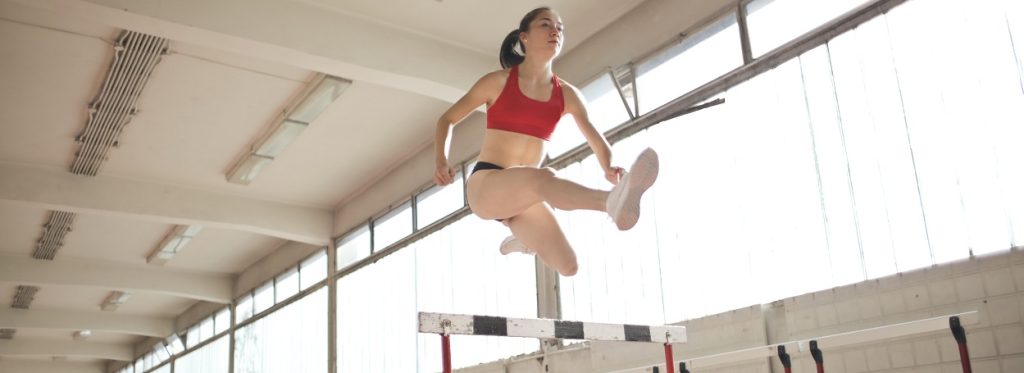
The median down payment on a house now tops $27K, the National Association of REALTORS® has announced. The bar has been raised. In late 2020, it stood at $20K.
In fact, six-figure down payments aren’t unusual, if you’re looking in and around popular coastal cities. Outside the San José tech hub, the median down payment on a home or condo is an absolute monster at $336,700. In the Bay Area, it’s $253,000. In the L.A. and Long Beach markets it’s a comparably modest $166,500. Down payments in greater Ventura, Santa Rosa and San Diego are all above $100K. Other key areas where 100K+ is the norm are Boulder, Colorado; Stamford and Norwalk, Connecticut; Greater Seattle; and Boston.
Why even try to buy at this point, you ask? Compare the options.
Tough as it is to buy today, there are still good reasons to do it. A typical home buyer builds equity at a (not guaranteed, of course) rate of 7% a year, through real estate appreciation. Plus, buyers save value for themselves rather than giving it to another property owner in the form of rent.
Rents are running extremely high in many areas of the country. If you are renting, consider the opportunity cost of continuing to make these payments — if you could instead be building equity in your own real estate asset.
Now, for plenty of people, renting is actually the best option. Some want the flexibility of a rental situation — for example, so they can easily move. But many would prefer to own. And the longer they put it off, the more interest rates will likely keep climbing from their pandemic-year lows.
The biggest hurdle for most buyers involves getting the funds together for a down payment. Even if it seems impossible, one or more of the following ideas could be worth some thought.
Don’t have heaps of cash in a savings account? Consider these workarounds.

Maybe you can’t turn to anyone close to you for a gift to help with your down payment. Of course, you can sell your car, gold rings, and other valuables using today’s online platforms. But maybe you need to keep the car, and don’t have enough marketable items to come up with the cash necessary in this real estate market. If that’s the case, there are several creative ways of creating buying power and getting started on your real estate adventure.
Depending on your situation and risk tolerance, here are five possible alternatives:
- Pull From a Retirement Account
If you have a retirement account, but aren’t 59½, you might consider that money out of reach. It’s not necessarily off-limits.
First, speak with your tax specialist in advance about how early withdrawals could incur penalties, income taxes, and special tax treatment, in order to know what’s coming and plan around it. Then, weigh the pros and cons. There’s an opportunity cost in leaving your funds in the account if they could make you a homeowner.
You might also have the option of taking out a 401(K) loan. You’ll pay yourself back over time, and rebuild your retirement account as you do.
- Purchase a Home With a Co-Buyer
Consider pooling your resources with a friend or co-worker. A down payment and other costs of homeownership can be a joint investment, benefiting both parties.
If you’re co-buying real estate, you’ll need to plot out, in advance, how each co-owner will be vested on the deed. You can own the property in unequal shares if your friend is advancing the whole down payment, or one person is investing more, overall, than the other. It all depends how the two (or more) of you decide to share ownership.
And do have a signed, notarized legal agreement in place, so there is no confusion about how you’ll sell the property later, or what will occur if your relationship sours, or in case one co-owner dies.
- Try Your Hand at House Hacking
House hacking is a trendy term for buying a multi-unit property. While you’ll still need money for a down payment and the mortgage, you could recoup your costs by using the additional unit as a source of monthly rental income. This could empower you to buy into an area you thought you were priced out of, because the rental income associated with the property enhances your borrowing power.
Some buyers use the equity they build in their first multi-unit property to buy an even more lucrative property from there, through an IRS Section 1031 exchange. Investors can borrow more as they gain experience, and raise their income over time.
A lender for a multi-unit property applies different standards, and requires the borrower to have a stronger credit profile. Still, your options are more diverse if you are treating your rental property as your primary residence. Like other home buyers, you can…
Consider low- or no- down payment loans, such as:
- Freddie Mac’s Home Possible® loans.
- Fannie Mae’s HomeReady® loans.
- U.S. Department of Agriculture (USDA) loans.
- Veterans Affairs (VA) loans.
For buying a single-unit home, FHA loans can be had with down payments as low as 3.5%. And the USDA and VA loans are advertised as available with no money down. What you actually need to invest will depend on your personal circumstances.
- Have Your Seller “Assist” With Your Down Payment
Speak with your real estate agent about asking the home’s seller to cover a part of the closing costs.
A seller assist (3% or 6% is typical) lets you pay less up front for the home. This can help you secure a mortgage. Typically, the seller’s agreement to assist with closing costs raises the price of purchase — and the mortgage in turn — so it’s a bit like buy-now-pay-later.
You’ll need to involve your mortgage specialist in your planning. The kind of loan you get dictates the limits on sellers’ concessions.
Does the seller have to agree to assist with the closing costs? No. But the seller might like the overall terms of your offer. Or this type of closing costs credit may be normal in the market you want to buy into. Ask your agent for guidance.
- Use a Renovation Loan to Buy an Old House
Under Section 203(k) of the National Housing Act, a buyer with good credit can make a down payment as low as 3% with the FHA to purchase a home that needs work. Because such homes are cheaper than others in their area, so are their down payments. The part of the loan dedicated to home improvements goes into an interest-bearing escrow account, and the borrower gets six months to do the bulk of the work. Conventional rehab mortgages are available, too. Generally, FHA approvals are easier to get.
If fixing up an old home is within your skill set or you’re willing to have a construction team do the job, ask your mortgage pro about 203(k) loans and their current interest rates. While this path involves heavy paperwork and oversight by a 203(k) consultant, if the house just needs a non-structural makeover, your purchase may qualify for a streamlined version of the 203(k) loan.
☛ Government Assistance Options? Down payment assistance is sometimes available from first-time buyer funds or state-sponsored loan products that support home ownership. There are also federal homeowner assistance plans for households that fit the criteria.
Each buyer needs a personal technique to clear the down payment hurdle.
The 20% down payment is the default method. The more a buyer puts down, the less risk a lender takes on. This means the lender will be happy to extend the buyer the lowest available interest rates, and skip the private mortgage insurance requirement.
But the standard down payment doesn’t work for everybody. You have a unique set of circumstances. The best method is the one that works for you. Sometimes, a nonstandard approach is necessary to make real strides forward.
Supporting References
REALTOR® Magazine: Down Payments Reach a New High (Dec. 7, 2021).
26 U.S. Code § 1031: Exchange of Real Property Held for Productive Use or Investment. See IRS Fact Sheet: Section 1031 of the U.S. Internal Revenue Code.
U.S. Department of Housing and Urban Development: The Section 203(k) Loan Program Turning “Fixer-Uppers” into Dream Homes (PDF).
Deeds.com: Buying a Fixer-Upper: What Are the Best Financing Options? (Mar. 31, 2021).
Photo credits: both by Andrea Piacquadio.
